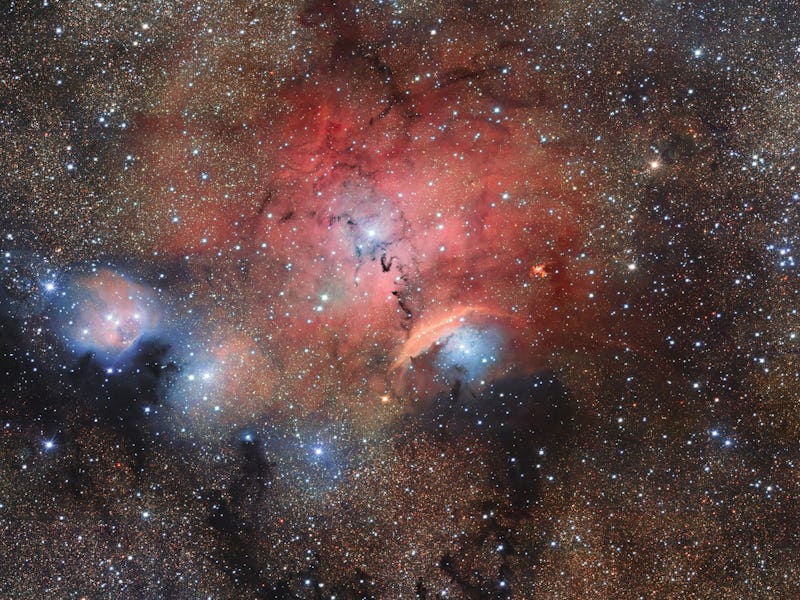New Image of a "Stellar Nursery" is Majestic But Also Terrifying
It’s nowhere near as peaceful as it sounds.

From Earth, stars seem like tiny twinkling jewels that bedazzle the night sky. But but up close and personal, they’re tightly packed spheres of plasma that are continuously radiating energy into outer space.
The way stars are born is even more horrifying, as we’re about to get into, but from a safe distance the process is mind-bogglingly beautiful, as this new photo from the European Southern Observatory reveals.
Astronomers managed to photograph a stellar nursery they have named Sharpless 29 with the ESO’s VLT Survey Telescope in Chile. This star breeding ground is in the constellation Sagittarius, 5,500 light-years away, and it’s packed with gases and dust, which are exactly the vitamins and minerals baby stars need to grow up big and strong.
The full image captured by the ESO.
All stars need to start their lives are giants clouds of space dust and gravity to pull all those particles together. Sharpless 29 has both. Once a space cloud — or a nebula — gets so massive it begins to collapse and clump together into thousands of balls of gas, known as solar masses. These stellar embryos, if you will, keep swirling and gathering mass until become what we see as a sparkle in the night sky.
During this period infant stars — much like human babies — throw some pretty catastrophic tantrums. They spit out wads of molten matter, gas, and dust. All of this star puke is mixed with potent rays of ultraviolet light to create the intergalactic mosaic you see before you.
Part of ESO's Paranal Observatory. It is the largest telescope in the world surveying the sky in visible light.
The glowing red mist comes from the emissions of hydrogen gas and those bright blotches of blue light are caused by the reflection and scattering effects of tiny dust particles. Those dark, vein-looking areas running through the red area are caused by patches of dust that block out the light, preventing astronomers from capturing what lies behind.
This magisterial image of Sharpless 29 isn’t just something to stare at after a blunt. Scientists are constantly working to grasp more of the processes that occur thousands of light-years away. Photographs like these help them better understand the building blocks of the universe that surrounds us.